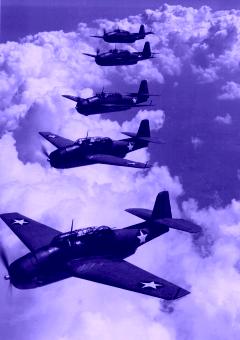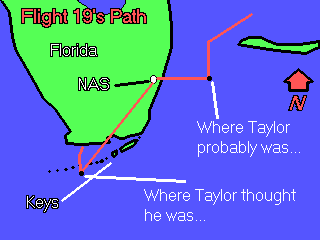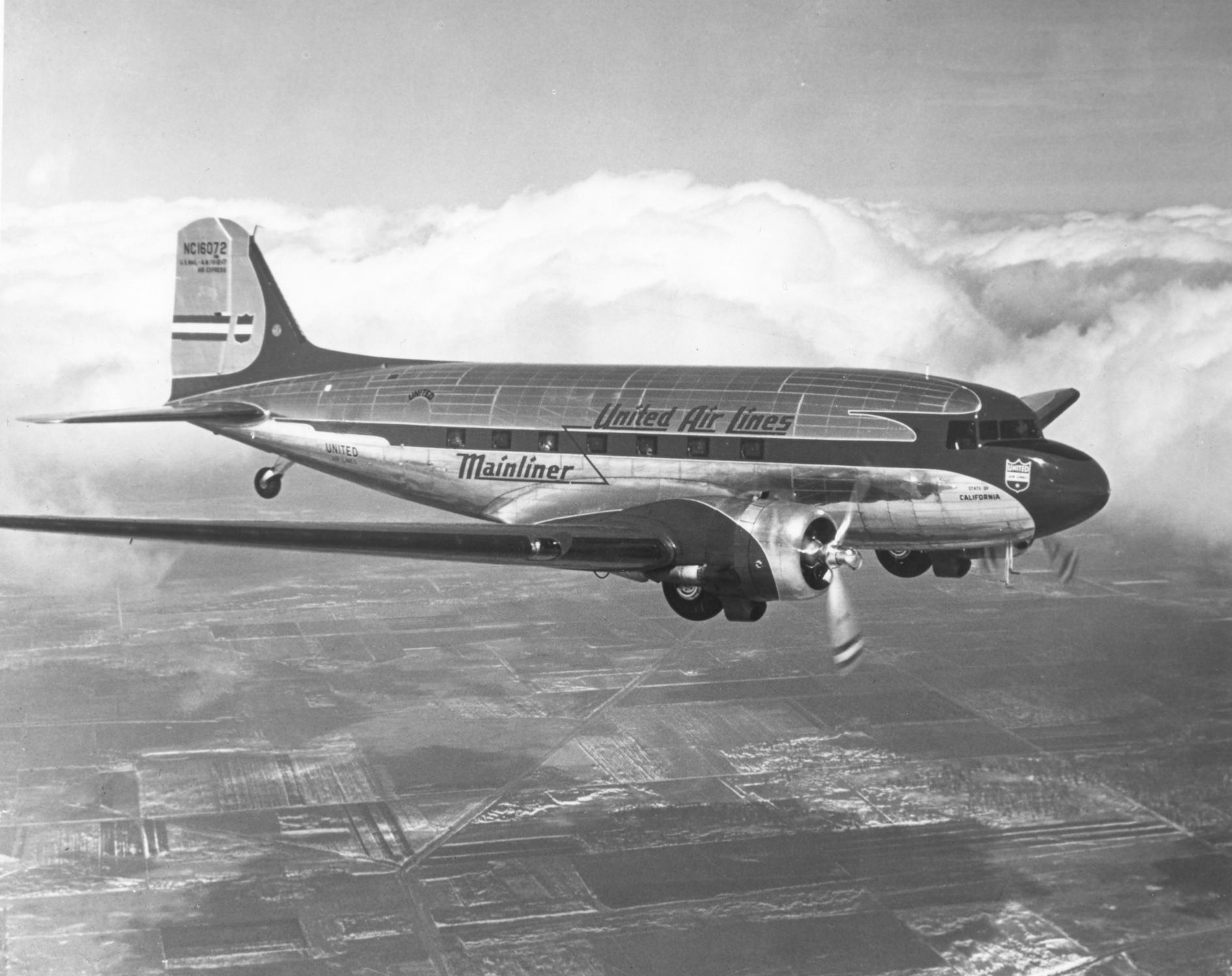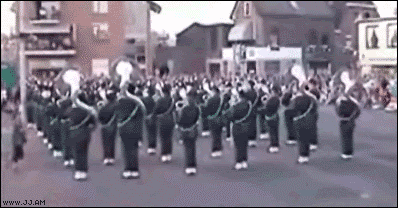BERMUDA TRIANGLE (PART 2 )
 •
by
•
by Apress

For decades the area known as the Bermuda Triangle has been a place of deep mystery as ships, aircraft and people have all mysteriously vanished, never to be seen again. Some believe it to be a dimensional doorway, maybe somehow connected to the fabled city of Atlantis. Whatever the truth is, the mystery still lives on.

Acts of Man
Human Error
One of the most cited explanations in official inquiries as to the loss of any aircraft or vessel is human error. Whether deliberate or accidental, humans have been known to make mistakes resulting in catastrophe, and losses within the Bermuda Triangle are no exception. For example, the Coast Guard cited a lack of proper training for the cleaning of volatile benzene residue as a reason for the loss of the tanker V.A. Fogg in 1972. Human stubbornness may have caused businessman Harvey Conover to lose his sailing yacht, the Revonoc, as he sailed into the teeth of a storm south of Florida on January 1, 1958. It should be noted that many losses remain inconclusive due to the lack of wreckage which could be studied, a fact cited on many official reports.
Deliberate Acts of Destruction
This can fall into two categories: acts of war, and acts of piracy. Records in enemy files have been checked for numerous losses; while many sinkings have been attributed to surface raiders or submarines during the World Wars and documented in the various command log books, many others which have been suspected as falling in that category have not been proven; it is suspected that the loss of USS Cyclops in 1918, as well as her sister ships Proteus and Nereus in World War II, were attributed to submarines, but no such link has been found in the German records.
Piracy, as defined by the taking of a ship or small boat on the high seas, is an act which continues to this day. While piracy for cargo theft is more common in the western Pacific and Indian oceans, drug smugglers do steal pleasure boats for smuggling operations, and may have been involved in crew and yacht disappearances in the Caribbean. Historically famous pirates of the Caribbean (where piracy was common from about 1560 to the 1760s) include Edward Teach (Blackbeard) and Jean Lafitte. Lafitte is sometimes said to be a Triangle victim himself.
Another form of pirate operated on dry land. Bankers or wreckers would shine a light on shore to misdirect ships, which would then founder on the shore; the wreckers would then help themselves to the cargo. It is possible that these wreckers also killed any crew who protested. Nags Head, North Carolina, was named for the wreckers' practice of hanging a lantern on the head of a hobbled horse as it walked along the beach.
Popular Theories
Triangle writers have used a number of supernatural theories to explain the events. One explanation pins the blame on leftover technology from the lost continent of Atlantis. Sometimes connected to the Atlantis story is the submerged rock formation known as the Bimini Road off the island of Bimini in the Bahamas, which is in the Triangle by some definitions. Followers of the purported psychic Edgar Cayce take his prediction that evidence of Atlantis would be found in 1968 or '69 as referring to the discovery of the Bimini Road. Believers describe the formation as a road, wall, or other structure, though geologists consider it to be of natural origin.
Other writers attribute the events to UFOs. This idea was used by Steven Spielberg for his film Close Encounters of the Third Kind, which features the lost Flight 19 as alien abductees.
Charles Berlitz, grandson of a distinguished linguist and author of various additional books on anomalous phenomena, has kept in line with this extraordinary explanation, and attributed the losses in the Triangle to anomalous or unexplained forces.
Famous Incidents
Flight 19

Flight 19 was a training flight of TBM Avenger bombers that went missing on December 5, 1945 while over the Atlantic. The impression is given that the flight encountered unusual phenomena and anomalous compass readings, and that the flight took place on a calm day under the supervision of an experienced pilot, Lt. Charles Carroll Taylor. Adding to the intrigue is that the Navy's report of the accident was ascribed to "causes or reasons unknown." It is believed that Taylor's mother wanted to save her son's reputation, so she made them write "reasons unknown" when actually Taylor was 50 km NW from where he thought he was.
While the basic facts of this version of the story are essentially accurate, some important details are missing. The weather was becoming stormy by the end of the incident; only Taylor had any significant flying time, but he was not familiar with the south Florida area and had a history of getting lost in flight, having done so three times during World War II, and being forced to ditch his planes twice into the water; and naval reports and written recordings of the conversations between Taylor and the other pilots of Flight 19 do not indicate magnetic problems.
On December 5th, 1945, five Avenger torpedo bombers lifted into the air from the Navel Air Station at Fort Lauderdale, Florida, at 2:10 in the afternoon. It was a routine practice mission and the flight was composed of all students except for the Commander, a Lt. Charles Taylor.
The mission called for Taylor and his group of 13 men to fly due east 56 miles to Hens and Chicken Shoals to conduct practice bombing runs. When they had completed that objective, the flight plan called for them to fly an additional 67 miles east, then turn north for 73 miles and finally straight back to base, a distance of 120 miles. This course would take them on a triangular path over the sea.
About an hour and a half after the flight had left, a Lt. Robert Cox picked up a radio transmission from Taylor. Taylor indicated that his compasses were not working, but he believed himself to be somewhere over the Florida Keys (the Keys are a long chain of islands south of the Florida mainland). Cox urged him to fly north, toward Miami, if Taylor was sure the flight was over the Keys.
Planes today have a number of ways that they can check their current position including listening to a set of GPS (Global Positioning Satellites) in orbit around the Earth. It is almost impossible for a pilot to get lost if he has the right equipment and uses it properly.
In 1945, though, planes flying over water had to depend on knowing their starting point, how long and fast they had flown, and in what direction. If a pilot made a mistake with any of these figures, he was lost. Over the ocean there were no landmarks to set him right.
Apparently Taylor had become confused at some point in the flight. He was an experienced pilot, but hadn't spent a lot of time flying east toward the Bahamas which was where he was going on that day. For some reason Taylor apparently thought the flight had started out in the wrong direction and had headed south toward the Florida Keys, instead of east. This thought was to color his decisions throughout the rest of the flight with deadly results.
The more Taylor took his flight north to try to get out of the Keys, the further out to sea the Avengers actually traveled. As time went on, snatches of transmissions were picked up on the mainland indicating the other Flight 19 pilots were trying to get Taylor to change course. "If we would just fly west," one student told another, "we would get home." He was right.
By 4:45 P.M. it was obvious to the people on the ground that Taylor was hopelessly lost. He was urged to turn control of the flight over to one of his students, but apparently he didn't. As it grew dark, communications deteriorated. From the few words that did get through it was apparent Taylor was still flying north and east, the wrong directions.
At 5:50 P.M. the ComGulf Sea Frontier Evaluation Center managed get a fix on Flight 19's weakening signals. It was apparently east of New Smyrna Beach, Florida. By then communications were so poor that this information could not be passed to the lost planes.
At 6:20 a Dumbo Flying Boat was dispatched to try and find Flight 19 and guide it back. Within the hour two more planes, Martin Mariners, joined the search. Hope was rapidly fading for Flight 19 by then. The weather was getting rough and the Avengers were very low on fuel.
The two Martin Mariners were supposed to rendezvous at the search zone. The second one, designated Training 49, never showed up.
The last transmission from Flight 19 was heard at 7:04 P.M. Planes searched the area through the night and the next day. There was no sign of the Avengers.

Nor did the authorities really expect to find much. The Avengers, crashing when their fuel was exhausted, would have been sent to the bottom in seconds by the 50 foot waves of the storm. As one of Taylor's colleagues noted, they didn't call those planes 'Iron Birds' for nothing. They weighed 14,000 pounds empty. So when they ditched, they went down pretty fast.
What happened to the missing Martin Mariner? The crew of the SS Gaines Mill observed an explosion over the water shortly after the Mariner had taken off. They headed toward the site and there they saw what looked like oil and airplane debris floating on the surface. None of it was recovered because of the bad weather, but there seems little doubt this was the remains of the Mariner. The plane had a reputation as being a 'flying bomb' which would burst into flame from even a single, small spark. Speculation is that one of 22 men on board, unaware that the unpressurized cabin contained gas fumes, lit a cigarette, causing the explosion.
So how did this tragedy turn into a Bermuda Triangle mystery? The Navy's original investigation concluded the accident had been caused by Taylor's confusion. Taylor's mother refused to accept that and finally got the Navy to change the report to read that the disaster was for "causes or reasons unknown." This may have spared the woman's feelings, but blurred the actual facts.
The saga of Flight 19 is probably the most repeated story about the Bermuda Triangle. The planes, and their pilots, even found their way into the science fiction film classic, 'Close Encounters of the Third Kind.'
Where is Flight 19 now? In 1991 five Avengers were found in 600 feet of water off the coast of Florida by the salvage ship Deep Sea. Examination of the planes showed that they were not Flight 19, however, so the final resting place of the planes, and their crews is still the Bermuda Triangle's secret.
The Mary Celeste
An 1861 painting of the Amazon (later renamed Mary Celeste)

The mysterious abandonment in 1872 of the Mary Celeste is often but inaccurately connected to the Triangle, the ship having been abandoned off the coast of Portugal. Many theories have been put forth over the years to explain the abandonment, including alcohol fumes from the cargo and insurance fraud. The event is possibly confused with the sinking of a ship with a similar name, the Mari Celeste, off the coast of Bermuda on September 13, 1864, which is mentioned in the book Bermuda Shipwrecks by Dan Berg.
Ellen Austin
The Ellen Austin supposedly came across an abandoned derelict, placed on board a prize crew, and attempted to sail with it to New York in 1881. According to the stories, the derelict disappeared; others elaborating further that the derelict reappeared minus the prize crew, then disappeared again with a second prize crew on board. A check of Lloyd's of London records proved the existence of the Meta, built in 1854; in 1880 the Meta was renamed Ellen Austin. There are no casualty listings for this vessel, or any vessel at that time, that would suggest a large number of missing men placed on board a derelict which later disappeared
USS Cyclops

The incident resulting in the single largest loss of life in the history of the U.S. Navy not related to combat occurred when USS Cyclops under the command of Lieutenant Commander G. W. Worley, went missing without a trace with a crew of 306 sometime after March 4, 1918, after departing the island of Barbados. Although there is no strong evidence for any theory, storms, capsizing and enemy activity have all been suggested as explanations.
Theodosia Burr Alston

Theodosia Burr Alston was the daughter of former United States Vice President Aaron Burr. Her disappearance has been cited at least once in relation to the Triangle, in The Bermuda Triangle by Adi-Kent Thomas Jeffrey (1975). She was a passenger on board the Patriot, which sailed from Charleston, South Carolina to New York City on December 30, 1812, and was never heard from again. Both piracy and the War of 1812 have been posited as explanations, as well as a theory placing her in Texas, well outside the Triangle.
Spray
Captain Joshua Slocum's skill as a mariner was beyond argument; he was the first man to sail around the world solo. In 1909, in his boat Spray he set out on a course to take him through the Caribbean to Venezuela. He disappeared; there was no evidence he was even in the Triangle when Spray was lost. It was assumed he was run down by a steamer or struck by a whale, the Spray being too sound a craft and Slocum too experienced a mariner for any other cause to be considered likely, and in 1924 he was declared legally dead. While a mystery, there is no known evidence for, or against, paranormal activity.
Carroll A. Deering
A five-masted schooner built in 1919, the Carroll A. Deering was found hard aground and abandoned at Diamond Shoals, near Cape Hatteras, North Carolina on January 31, 1921. Rumors and more at the time indicated the Deering was a victim of piracy, possibly connected with the illegal rum-running trade during Prohibition, and possibly involving another ship, S.S. Hewitt, which disappeared at roughly the same time. Just hours later, an unknown steamer sailed near the lightship along the track of the Deering, and ignored all signals from the lightship. It is speculated that the Hewitt may have been this mystery ship, and possibly involved in the Deering crew's disappearance.
Douglas DC-3

On December 28, 1948, a Douglas DC-3aircraft, number NC16002, disappeared while on a flight from San Juan, Puerto Rico, to Miami. No trace of the aircraft or the 32 people onboard was ever found. From the documentation compiled by the Civil Aeronautics Board investigation, a possible key to the plane's disappearance was found, but barely touched upon by the Triangle writers: the plane's batteries were inspected and found to be low on charge, but ordered back into the plane without a recharge by the pilot while in San Juan. Whether or not this led to complete electrical failure will never be known. However, since piston-engined aircraft rely upon magnetos to provide electrical power and spark to their cylinders rather than batteries, this theory is unlikely.
 For the end,something for fun
For the end,something for fun
anonymous =================>>>>>>>>>>>

Busted =================>>>>>>>>>>>>>


 By Apress on June 21, 2012 ®
By Apress on June 21, 2012 ®


Comments
prviii xD zanimiv članek, sam velik je za prebrat v angleščini : )
vote + sub
mysteries are my favourite subject
@LoCkSaW ja sej vem sam je tok podatkov o tem,da je nemogoče še bolj skrajšat :/
@Brave heart_95 tnx.Mysteries are my favorite too \o/ oleeeeeeeeeeee
v
v
Vote
v+s
vote
voted
vote for self education!